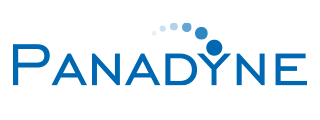Hexagonal boron nitride (hBN) is an exceptional material that benefits from the property of directional dependence, otherwise known as anisotropy. This defines the differential behavior of directional planes in a material. This leads to distinct property differences based on the orientation of its crystallographic planes. Wood is perhaps the best known anisotropic material on the macroscale, with tightly bound fibers that exhibit high in-grain strength. Yet these can be easily split apart when cutting along the grain.
Larger material structures tend to exhibit tensile or flexural strength variations along different axes. At the micro- and nanoscales, however, anisotropic behavior imparts a broad range of physiomechanical, optical, and electronic properties that are desirable for myriad engineering and manufacturing applications. ‘White graphite’, or hBN, is one of these innovative intermediate products.
In this blog post, Saint-Gobain Boron Nitride will explore the properties and characteristics of hBN in more detail.
What is hBN?
The synthetic ceramic boron nitride exists in several forms, the properties of which are primarily determined by the arrangement of boron (B) and nitrogen (N) atoms within the bulk material’s molecular structure. Of the three crystalline phases of boron nitride, hBN is the most stable. It is structurally analogous to graphite with layers of covalently-bound B—N atoms arranged in a hexagonal lattice.
These hBN layers are held together by comparatively weak Van der Waals forces, which explains the material’s comprehensive anisotropic properties. For example, the average in-plane thermal conductivity of hBN is 300 Watts per meter Kelvin (W/mK), as thermal energy can readily propagate through the covalent B—N bonds. This reduces to a mere 30 W/mK for through-plane conductivity of boron nitride.
Alongside this outstanding capacity for modulating the transfer of thermal energy, hBN also exhibits excellent lubricating properties due to its low coefficient of friction (~0.3). Although mechanically analogous to graphite, hBN differs in that is an excellent insulator with superior thermal shock performance and a dielectric strength that exceeds even alumina (Al2O3).
hBN from Saint-Gobain Boron Nitride
Saint-Gobain Boron Nitride has harnessed the unique potential of hBN to develop an expansive range of products suitable for numerous applications, including: lubricant additives for dynamic friction materials in aerospace and automotive applications; thermal interface materials for advanced electronics cooling systems; filler powders for color cosmetics and commercial skincare products; and hot-pressed sinetered and machined components in a variety of advanced engineering applications.
hBN can be readily dispersed in continuous phase media of varying consistencies such as oils, grease, and both aqueous and non-aqueous solvents. It can also be applied to component substrates as a dry powder to provide friction resistance in refractory environments.
If you would like any more information about the hBN products available from Saint-Gobain Boron Nitride, please do not hesitate to contact us.
source: Saint-Gobain
